The Flying Outriggers Ski Club: The History of Adaptive Skiing on Mt. Hood
In the early 1960s, Portland-area ski instructors founded the first adaptive ski club in the country.
“Hi, I’m in search of an old book, and I think you might have the last copy,” I explained on a phone call to the reference librarian at the Community Library in Ketchum, Idaho.
I was looking for “Amputee Ski Technique,” a book published in 1965 by two Portland-area ski instructors. So far, I had struck out- who would hold on to a manual for adaptive skiing written 60 years ago?
But Amputee Ski Technique was the first- and for a while, the only- guide to adaptive skiing in the country. Their book was called “the other white book,” the original white book being “The Official American Ski Technique” by Bill Lash and Paul Valar, used in ski schools across the country. 1
“Good news! We’ve got it. It’s like- one of those comb-bound books,” the librarian said. Flipping through the pages, she remarked that one of the pages had “gift for 1988” written in pencil in the margins. “It was also the fifty-four-thousandth eighty-first book we added to the collection,” she said. “We used to keep track of stuff like that.”
“I know this is a big ask,” I said, “but can you scan it and send it to me?”
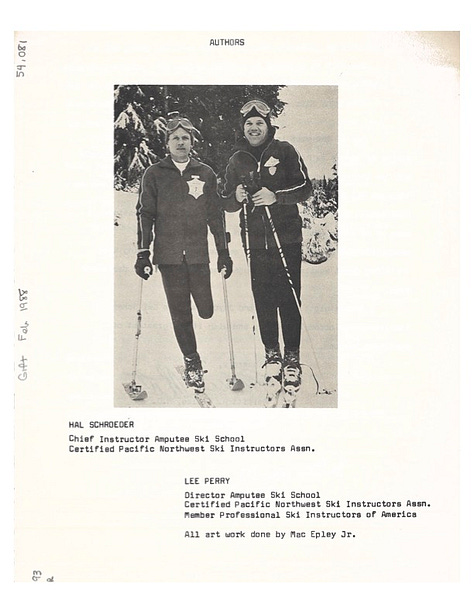
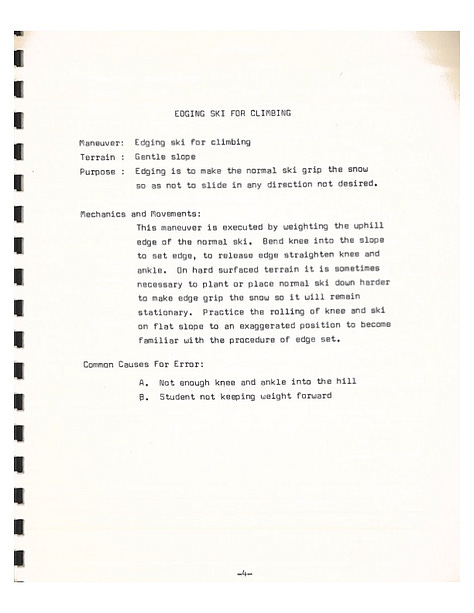
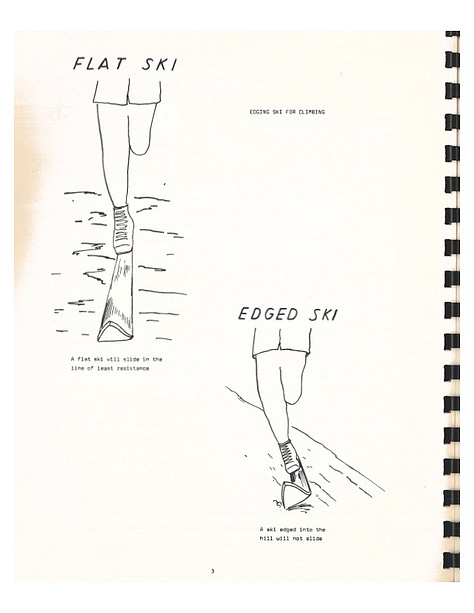
Mt. Hood, Portland’s local stratovolcano, was home to the first adaptive ski club in the country, the Flying Outriggers Ski Club. Founded in the winter of 1959-60, the Flying Outriggers would go on to support adaptive skiers for more than 30 years. 2
The first recorded adaptive alpine skier was Franz Wendel, an Austrian WWII veteran and amputee. In 1942, he attached skis to the ends of a pair of crutches and figured out how to “3-track” down ski slopes. He was followed by Sepp “Peppi” Zwicknagel, a double amputee who would start a disabled division of the Austrian Ski Association. 3
Somehow, a ski movie made about the Austrian adaptive skiers made its way to Lee Perry of Portland, Oregon, who had just begun a 55-year career as a ski instructor on Mt. Hood with the Jaycees Ski School. Perry, who passed away in 2021, was a Korean War veteran, earning a Bronze Star during his service. Two of his friends from the war were amputees, and he also had a high school friend who had lost a leg in an industrial accident. An obituary for Lee put it simply: “Lee wanted his friends who were amputees to ski with him.” 4
Perry began organizing the Flying Outriggers Ski Club- making phone calls, knocking on doors, and drawing on support from the civic organizations he was a part of. He found support from the Jaycees, a young men’s civic organization that ran the ski school at Timberline Lodge where he worked. He was also a member of the Mazamas, a mountaineering club based in Portland.
Perry connected with Dick Martin, who was already an accomplished amputee skier after losing a leg in an automotive crash. Perry also met Gretchen Fraser of Vancouver, Washington; the first American to win an Olympic medal in skiing. During WWII, Fraser had worked at the veteran’s hospital in Sun Valley (Ketchum), Idaho, where the U.S. Navy had converted the ski resort buildings into a temporary recovery facility. Gretchen would spend her whole life supporting disabled veterans. 5
In 1962, Dick Martin taught the first Amputee ski lesson on Mt. Hood. In 1964, the Flying Outriggers hosted the first annual International Championship Amputee Slalom at Timberline Lodge, won by Dick Martin with a time of 1:26.4 (Herb Shinn of Bremerton, Washington came in only 0.6 seconds behind Martin at 1:27.0). The 2nd annual slalom in 1965 even featured a junior division with four entrants. 6 7
Lee Perry was also friends with the owners of the Pesznecker Brothers machine shop in Portland, getting access to the tools and materials needed for constructing adaptive ski equipment. In a 2014 interview with shredhood.com, Perry said “We would break the outriggers on Saturday and Sunday and rebuild them during the week, and then we would bring them back up the mountain and try them again.” The earliest versions of the outriggers weighed 4 pounds apiece, requiring incredible core strength to maneuver. Later versions would be made of aluminum, considerably reducing the weight.
A camera shop in Portland gave the Flying Outriggers a film camera that could capture 1.2 frames per second, allowing them to get slow motion, frame-by-frame stills of amputee skiers using the outriggers. Perry and Schroeder used this information to refine their technique recommendations and to develop a teaching strategy for new skiers- a radical idea; since at the time, most people thought amputees could only be taught to ski if they had skiing experience prior to their amputation.
By 1965, they had built a community, hosted a few events, refined their equipment, and developed a teaching strategy. They were ready to publish their book.
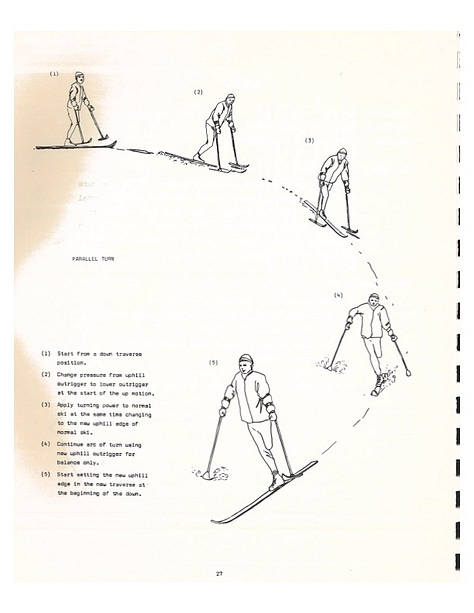
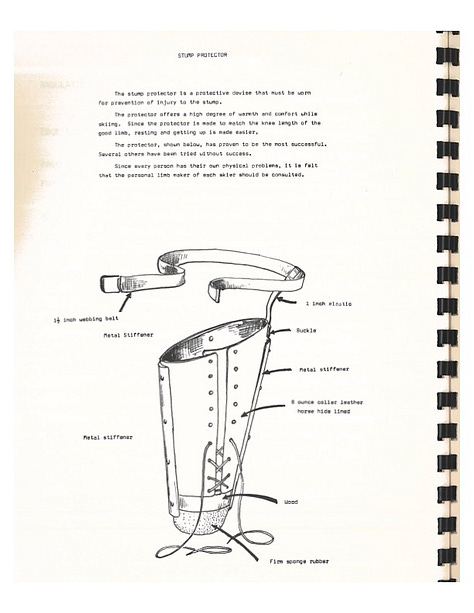
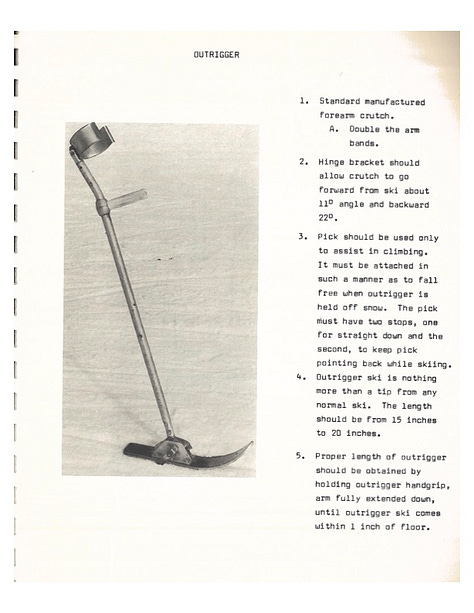
In addition to building a community for disabled skiers on Mt. Hood, The Flying Outriggers began spreading the word to other parts of the country. At the beginning of the 1965 ski season, Perry and Schroeder hosted a clinic on amputee ski instruction for 12 representatives from Seattle, Washington and Salem, Oregon ski schools. Perry was a member (and eventually, regional president) of the Professional Ski Instructors of America (PSIA), and he leaned on this network to distribute the Amputee Ski Technique book. In 1968, Perry spoke at the PSIA’s international conference in Aspen, Colorado; where the amputee ski technique manual was handed out in three languages. 8
The Flying Outriggers started as a group focused on amputee skiing, but as time and technology advanced, adaptive skiing grew in its capacity to support skiers with a wider range of disabilities. In 1969, blind skier Jean Eymere, who had been a ski instructor before losing his vision, developed techniques for blind skiers in partnership with the Colorado School for the Deaf and Blind. By 1973, the Flying Outriggers were offering blind and deaf ski instruction, as well as programs supporting polio victim and paraplegic skiers. 9 10
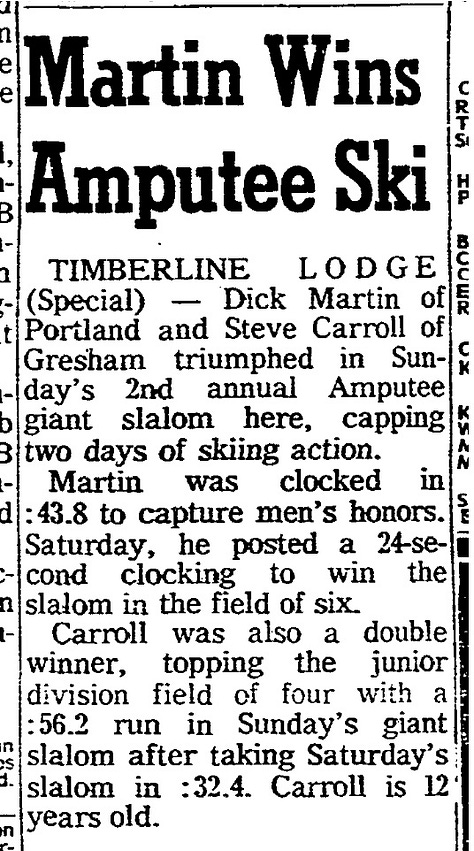
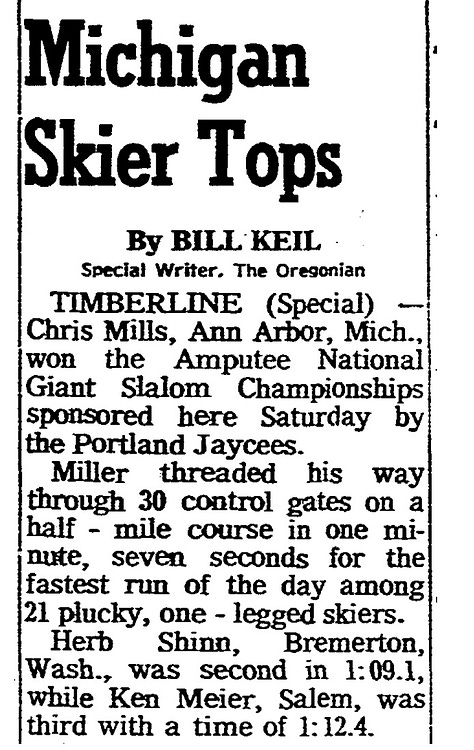
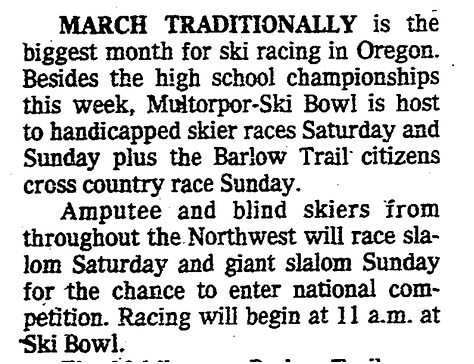
In 1978, the first sit-ski in the US was invented by paraplegic Stanford University engineering student Peter Axelson. Called the Arroya, Axelson’s first design looked something like a whitewater kayak, including a neoprene skirt to lock the person into the sit-ski. Steering was done using eight-inch outriggers. In the early 1980’s, Axelson’s second phase of designs included both mono and bi-skis, which allowed users to load and unload from chairlifts independently, and increased the amount of terrain sit-skiers could access without being tethered to an instructor. From the original ski outriggers pioneered by the Austrians in the 1940s to the sit-skis invented by Axelson in the early 1980s, skiers with disabilities have always been the driving force in adaptive skiing. 11

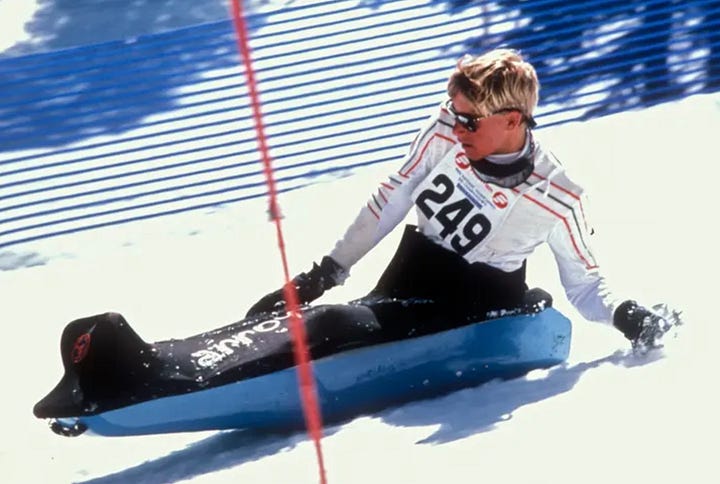
A few weeks ago, I slid into a parking spot on a snowy, slippery day in Government Camp, Oregon. I was visiting the Mt. Hood Cultural Center and Museum, where an upstairs room holds some of the Flying Outriggers Ski Club artifacts.
In front of a ski shop workbench, there is a 1990’s-era sit ski, featuring a spring suspension system to separate the user from the terrain. Early sit-skis like the Arroya had no suspension, just a thick foam pad to isolate the user from bumps and ice.
In a display case, there is a pinback button from the Portland Jaycees Ski School, where Perry was an instructor. Surrounded by patches from other Mt. Hood ski clubs, there is a patch for the Flying Outriggers Ski Club.
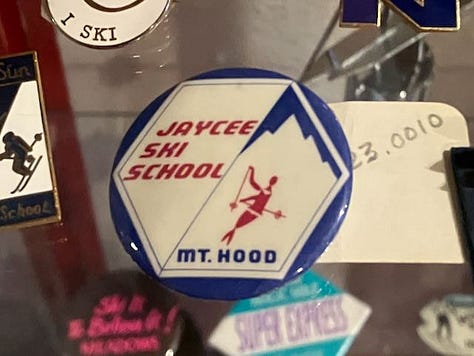
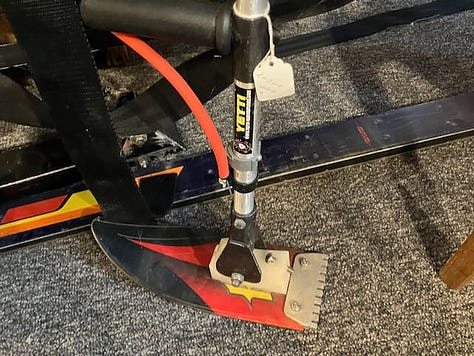
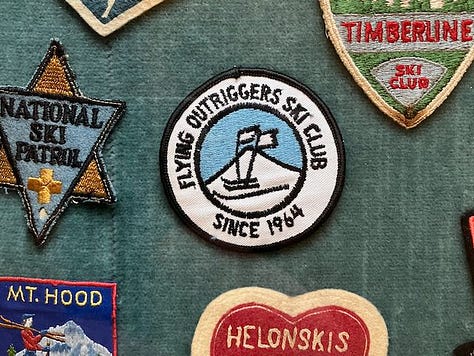
The Flying Outriggers are no longer, but Bend-based Oregon Adaptive Sports continues to support disabled skiers in Oregon. They have programs at Mt. Bachelor, Hoodoo, and Mt. Ashland. Mt. Hood Meadows offers adaptive ski lessons with certified instructors, and has equipment available to support a wide variety of access needs. 12
“The Early Adaptive Movement,” Letter to the Editor by Lee Perry, in the spring 2011 edition of 32 Degrees Magazine (link)
Note: special thanks to Buffy from the Community Library in Ketchum, Idaho; and Lloyd from the Mt. Hood Cultural Center and Museum.
There were many articles in the oregonian newspaper archives, interviews, and conversations with people that all informed my understanding of the history of the Flying Outriggers Ski Club and the history of adaptive snowsports in general. Feel free to ask me any questions you may have: I am happy to send you a source, point you in the direction of a person, or try to answer a question myself.



